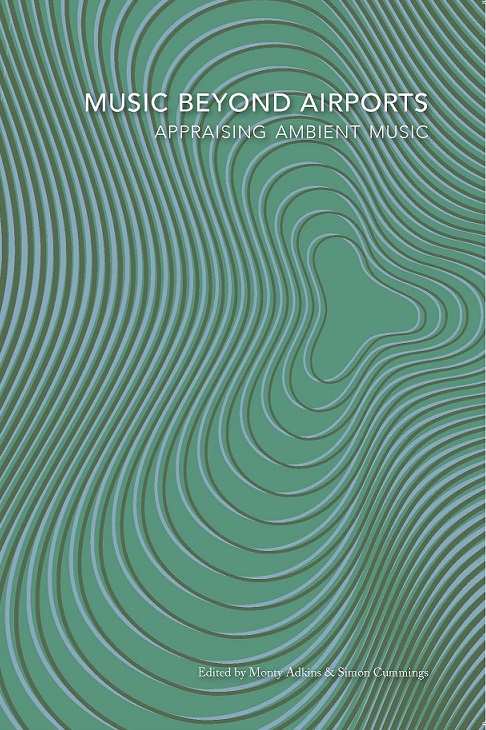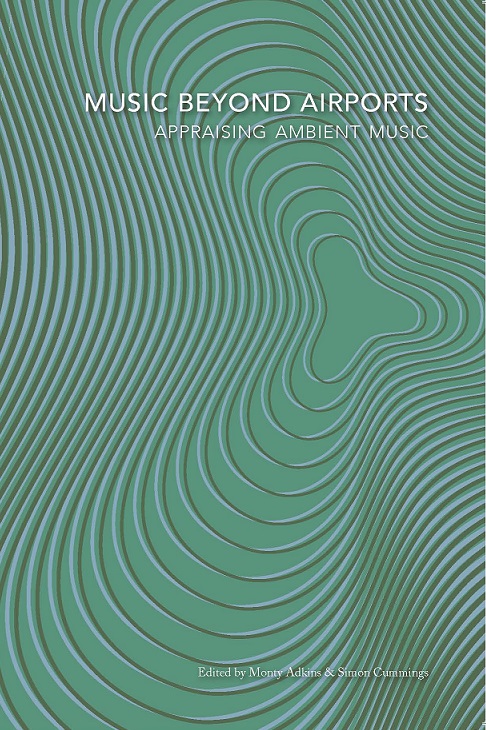Introduction
Ambient music, a genre characterized by its ethereal and atmospheric soundscapes, has had a profound impact on the music industry and our collective listening experience. From its inception by pioneers like Brian Eno to the modern innovations that continue to shape the genre, ambient music has transcended conventional boundaries, providing a unique auditory journey. In this article, we will explore the origins and evolution of ambient music, tracing its roots from the visionary work of Brian Eno to the diverse and innovative landscape of contemporary ambient artists.
Ambient music, often described as a genre of sonic exploration, has not only left an indelible mark on the music industry but has also transformed the way we engage with sound and music. Its journey from its early beginnings with visionaries like Brian Eno to the rich tapestry of contemporary ambient artists is a fascinating exploration of sonic evolution and experimentation.
Brian Eno, a trailblazing figure in the realm of ambient music, is credited with coining the term “ambient” to describe music that creates an environment or atmosphere. His seminal album, “Music for Airports” (1978), marked a watershed moment in the genre’s history. By pioneering the use of generative music techniques and emphasizing the importance of sonic texture over traditional musical structures, Eno laid the foundation for ambient music’s distinctive characteristics.
As ambient music evolved, it began to transcend traditional boundaries. Artists from various musical backgrounds embraced its ethos, incorporating ambient elements into genres as diverse as electronic, classical, and even rock. This cross-pollination of styles gave rise to a multitude of subgenres, each with its own unique sonic signature.
One of the remarkable aspects of ambient music is its ability to evoke a wide range of emotions and mental landscapes. Whether it’s the serene calmness of a Brian Eno composition or the immersive, otherworldly soundscapes created by contemporary artists like Tim Hecker or Stars of the Lid, ambient music serves as a sonic canvas upon which listeners can paint their own emotional and imaginative experiences.
In the modern era, ambient music has found a new lease on life through digital technology and the internet. Online platforms and streaming services have made it easier for both established and emerging ambient artists to share their creations with a global audience. This accessibility has facilitated a vibrant and ever-expanding ambient music community, where artists experiment with new sounds, collaborate across borders, and push the boundaries of what is possible within the genre.
Ambient music’s influence reaches far beyond the confines of recorded albums. It has become an integral part of various multimedia experiences, from film soundtracks to meditation apps and virtual reality environments. Its capacity to enhance and shape the mood of a given space or moment underscores its versatility and widespread appeal.
In conclusion, ambient music’s journey from its inception with Brian Eno to its contemporary manifestations is a testament to the enduring power of sonic exploration and experimentation. It continues to redefine our understanding of music, offering a transcendent auditory journey that resonates with listeners across the globe. As technology and artistic innovation continue to evolve, one can only imagine the new soundscapes and sonic landscapes that ambient music will introduce to our collective listening experience in the future.
For additional details, consider exploring the related content available here The Ambient Century: From Mahler to Trance: The Evolution of …
The term “ambient music” was popularized by British musician and producer Brian Eno in the 1970s. Eno, a founding member of Roxy Music and a prolific solo artist, sought to create a form of music that was less focused on traditional song structures and more on the creation of immersive sonic environments. His groundbreaking album “Music for Airports” (1978) marked a significant turning point in the history of music. It introduced the concept of using music as a backdrop or atmosphere, rather than a foregrounded melody, and laid the foundation for the ambient genre.
Eno’s pioneering work involved the use of synthesizers, tape loops, and minimalistic compositions to craft serene, contemplative, and often otherworldly soundscapes. “Music for Airports” was designed to provide solace to travelers in bustling airports, demonstrating the capacity of ambient music to create emotional and mental spaces for reflection and tranquility.
For additional details, consider exploring the related content available here History of Muzak: Where Did All The Elevator Music Go? | WQXR …

In the decades that followed Eno’s groundbreaking experiments, ambient music continued to evolve, diversify, and influence a wide range of musical genres. Artists like Harold Budd, Eno’s frequent collaborator, further explored the genre’s potential, incorporating piano and acoustic instrumentation into their ambient compositions. Albums like “The Plateaux of Mirror” (1980) exemplified this approach, blending electronic and organic elements to create lush and introspective soundscapes.
The 1990s witnessed the emergence of artists like Aphex Twin, whose album “Selected Ambient Works 85-92” (1992) introduced a more experimental and electronic edge to ambient music. This fusion of techno and ambient elements expanded the genre’s sonic palette and attracted a new generation of listeners.
If you’d like to dive deeper into this subject, there’s more to discover on this page: The Invention of Ambient Music | The New Yorker

In the 21st century, ambient music has experienced a resurgence, driven by technological advancements and a growing appreciation for its meditative qualities. Modern ambient artists use a wide array of tools, including software synthesizers, field recordings, and digital processing, to create intricate and immersive compositions.
Contemporary ambient musicians like Max Richter, Ólafur Arnalds, and Tim Hecker have pushed the boundaries of the genre, incorporating classical instrumentation, vocal textures, and experimental techniques into their work. These artists continue to blur the lines between ambient, classical, and electronic music, expanding the genre’s horizons and captivating audiences with their innovative approaches.
To delve further into this matter, we encourage you to check out the additional resources provided here: From ambient music to AI-generated soundscapes » Reprtoir

Conclusion
Ambient music, born from the visionary experiments of Brian Eno, has evolved into a diverse and ever-expanding genre. Its ability to create immersive and emotive soundscapes has transcended traditional musical boundaries, leaving an indelible mark on the music industry. From Eno’s pioneering work to the modern innovations of contemporary artists, ambient music continues to inspire reflection, contemplation, and a sense of transcendence in listeners around the world. As technology and creativity continue to advance, the future of ambient music promises to be as intriguing and boundless as its storied past.
Ambient music, originally conceived through the visionary experiments of Brian Eno, has undergone a remarkable evolution, transforming into a diverse and ever-expanding genre that defies conventional musical boundaries. Its unique ability to conjure immersive and emotive soundscapes has left an indelible mark on the music industry, reshaping the way we perceive and experience music. From Eno’s pioneering contributions to the trailblazing innovations of contemporary artists, ambient music remains a source of inspiration, inviting listeners to embark on a journey of reflection, contemplation, and transcendence. As technology continues to advance and creative boundaries continue to expand, the future of ambient music promises to be as intriguing and boundless as its storied past.
Brian Eno’s Pioneering Spirit: Brian Eno’s groundbreaking album, “Music for Airports,” released in 1978, laid the foundation for ambient music as we know it today. His concept of creating music that could exist as a subtle, atmospheric presence in the background or serve as a source of deep introspection was revolutionary. Eno’s ambient compositions were designed to enhance the environment, offering solace in the hustle and bustle of modern life.
Ambient as a Genre Without Borders: Over the decades, ambient music has evolved into a genre without borders, welcoming a diverse range of sonic influences and artistic interpretations. Artists like Aphex Twin, Stars of the Lid, and Tim Hecker have pushed the boundaries of ambient music, incorporating electronic, classical, and experimental elements to create emotionally resonant soundscapes. This genre has transcended the confines of traditional instrumentation, embracing the limitless possibilities of electronic production.
Soundscapes for Reflection and Contemplation: One of the defining features of ambient music is its power to create environments for reflection and contemplation. Whether it’s the gentle washes of sound in Eno’s compositions or the intricate layers of texture in contemporary ambient works, this genre invites listeners to disconnect from the external world and delve into the realms of inner thought and emotion. It provides a sonic canvas upon which listeners can paint their own emotional landscapes.
Transcendence Through Music: Ambient music has the unique ability to evoke a sense of transcendence, transporting listeners to ethereal and meditative states of mind. It can provide solace in times of stress or uncertainty and offer a gateway to deeper levels of consciousness. Many have used ambient music as a tool for meditation, relaxation, and even therapeutic healing.
A Boundless Future: As technology continues to advance, the future of ambient music holds exciting possibilities. Virtual reality, immersive audio experiences, and interactive installations are pushing the boundaries of how we engage with music. Ambient artists are exploring new sonic territories and collaborating across disciplines, leading to the emergence of hybrid forms of art that challenge our perceptions of music and space.
In conclusion, ambient music’s journey from Brian Eno’s pioneering experiments to the modern innovations of today’s artists is a testament to its enduring appeal and adaptability. Its capacity to create immersive and emotive soundscapes, inspire reflection and contemplation, and evoke a sense of transcendence ensures that ambient music will continue to resonate with audiences worldwide. As technology and creativity converge, the future of ambient music promises to be a captivating and boundless exploration of sonic landscapes and the human experience.
Looking for more insights? You’ll find them right here in our extended coverage: CABINET / Soothe Operator
More links
To delve further into this matter, we encourage you to check out the additional resources provided here: An introduction to Ambient Music
